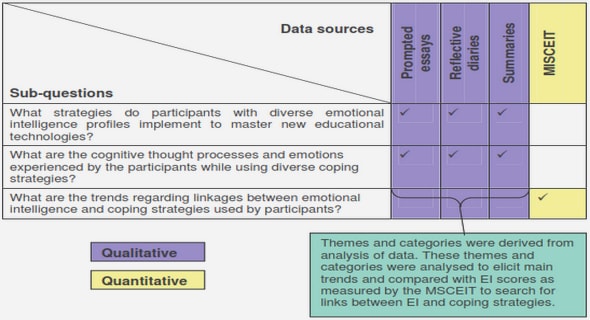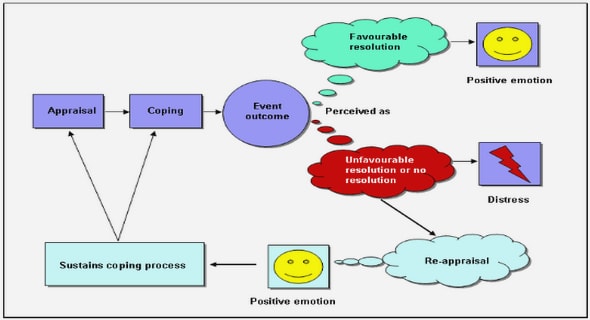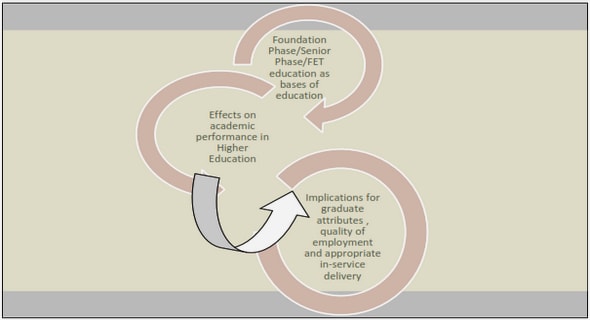Get Complete Project Material File(s) Now! »
EXAMINATION OF “GAPS” IN THE LITERATURE ON POLICY EFFECTS
A deeper analysis of literature in both developed and developing countries resu the prospects of achieving equity in all spheres of education provision looks bleak.
In South Africa, the necessity to pursue the effective implementation of all equity-orientated policies cannot be over-emphasized. In this study the literature review has identified “gaps” in policy effects on equity that can be addressed through this particular investigation. In this connection, the following “gaps” have been identified to serve as the main pointers, namely: (i) availability of resources, (ii) funding formula, (iii) contexts, (iv) effective role of the districts, and (v) theory of educational change for large scale reform.
CHAPTER SYNTHESIS
It is clear from the literature search, though most of it comes from the developed countries, that bridging the gap between the rich and poorer schools through equity-driven policies is not only complex, unpredictable but also messy. In many instances attempts to close the gap have led to the increase of inequalities, law suits, the general decline of the educational standard plus marketised approach, which results in high school fees.
Factors impacting negatively on effective implementation of school finance equity range from lack of attention to implementation to lack of skills and capacity in the effective utilization of the available resources. However, what is evident is that equity-driven policies are still regarded as central to educational reform. It is also clear, from the research point of view that in a modern democracies, the status groups into which persons fall should not be determinants f educational opportunity or outcome (Berne & Picus, 1994:26). ethora of olicies (NNSSF, OBE, PPM) geared towards the transformation of the school system in plementation of educational policies. Given policy overload and the fact that schools do not stigate the plementation pathway “travel” by the NNSSF and determine its effects on the quality.
There is, however, a dearth of school-based research on how organs of state departments like education in developing countries implement equity policy as attempts to address the inequalities. In South Africa, changes in the educational landscape resulted in a plp particular. Despite this bold attempt, little has been done in guiding schools on effective im have the luxury of taking one policy after the other (Hargreaves, 1998:742), there is no empirical evidence to trace the course and effects of the School Funding Policy through the education system down to the school level. This research study intends to inve im education provided by the schools.
CHAPTER ONE
STAGE SETTING: AN EXPEDITION IN SEARCH OF EQUITY
-INTRODUCTION
-PURPOSE AND OBJECTIVES OF THE STUDY
-PROBLEM STATEMENT AND BACKGROUND TO THE STUDY
-RATIONALE
-THE POLICY CONTEXT FOR NNSSF
-APPROACH TO THE STUDY
-RESEARCH METHODOLOGY
-LIMITATIONS OF THE STUDY
-ORGANIZATION OF THE CHAPTERS
CHAPTER TWO
POLICY STUMBLES ON REALITY: A CRITICAL EXAMINATION OF STUDIES ON POLICY IMPLEMENTATION
-INTRODUCTION
-THE CONCEPTUALIZATION OF KEY TERMS CENTRAL TO
-THE INVESTIGATION
-What, then, is implementation?
-KEY STRATEGIES EMPLOYED TO PURSUE EQUITY IN
-DEVELOPED COUNTRIES
-Taxation
-Funding formula which promised too much but deliveries little
-Performance indicators
-THE FAILURE TO ACHIEVE EQUITY IN DEVELOPED COUNTRIES
-The elusiveness of policy implementation
-STRATEGIES TO PURSUE EQUITY: LESSONS LEARNED
-AN INTERNATIONAL PERSPECTIVE
-A CRITICAL REVIEW OF THE EFFORTS TO ACHIEVE EQUITY
-LOCATING SCHOOL FINANCE POLICY IN A MACRO-ECONOMIC FRAMEWORK
-THE STRATEGIES ADOPTED TO FACILITATE
-IMPLEMENTATION OF THE NNSSF POLICY IS EQUITY BEING ACHIEVED WHERE IT MATTERS MOST?
-THE CARRY-THROUGH EFFECTS OF INADEQUATE BUDGET
CHAPTER THREE
THE CONCEPTUAL FRAMEWORK
-INTRODUCTION
-DEVELOPMENT OF A CONCEPTUAL FRAMEWORK
-CHAPTER SYNTHESIS
CHAPTER FOUR
RESEARCH DESIGN: HOW POLICY TRAVELS FROM THE CENTRE TO THE PERIPHERY
-INTRODUCTION
-NATIONAL EDUCATION DEPARTMENT LEVEL
-Provincial education department level
-Regional education level
-The school levels
-Stakeholders and experts
-BASIC APPROACH TO DATA COLLECTION
-Semi-structured interview
-Data processing, analysis and coding
-QUESTIONNAIRE DEVELOPMENT
-ENSURING VALIDITY
-LIMITATIONS OF THE STUDY
-CHAPTER SYNTHESIS
CHAPTER FIVE
EXPLORING UNDERSTANDINGS OF THE EDUCATION POLICY AT FOUR LEVELS OF THE EDUCATION SYSTEM
-INTRODUCTION
-FINDINGS
-National education departmental level
-Provincial level (Officials)
-Regional level (Officials)
-School level: Where policy hits the ground
-Tshwene Primary School: Case study #1
-Siege Primary School: Case study #2
-Banogeng Primary School: Case study #3
-Bogosing Secondary School: Case study #4
-Mosima Secondary School: Case study #5
-CHAPTER SYNTHESIS
CHAPTER SIX
POLICY GOALS AND SCHOOL LEVEL EFFECTS ON EQUITY: “INTENTIONS AND TENSIONS”
-INTRODUCTION
-FINDINGS AT FIVE CASE STUDY SCHOOL
-Tshwene Primary School: Case Study #1
-Siege Primary School: Case Study #2
-Banogeng Primary School: Case Study #3
-Bogosing Secondary School: Case Study #4
-Mosima Secondary School: Case Study #5
-CROSS-CASE COMPARISON
CHAPTER SYNTHESIS
CHAPTER SEVEN
THE INTERPLAY BETWEEN POLICY AND PRACTICE: THEORISING IMPLEMENTATION
-INTRODUCTION
-POLICY, THEORY AND PRACTICE
REFERENCE


